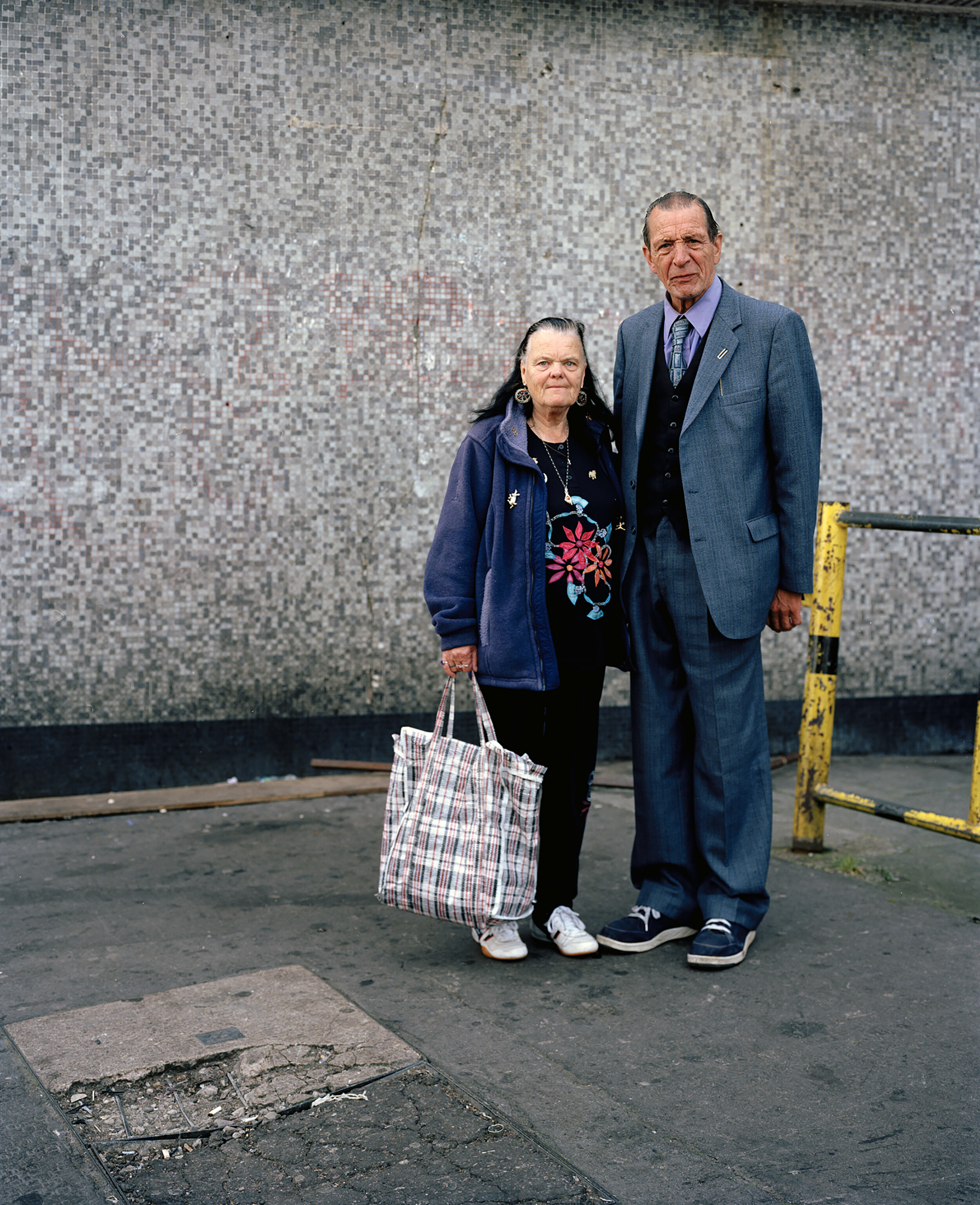From a Distance
Millions of people pass through the Elephant and Castle and its maze of roundabouts without ever noticing the people who live there. It is a place to get through, a place on the way to somewhere else. Of course, it could be argued that there is a certain reality to all of this. After all, the Elephant has one of the most transitory populations in London, many do not settle here for long. This is a place with a continual history of dramatic change: from the bustling and fashionable 1930’s with its picture houses and mega-churches, through the devastation of the Nazi bombings, and on to the construction of large-scale modernist estates like the Heygate. As this estate and others await demolition, and a new era of massive redevelopment around the Elephant begins, it seems that, from a historical perspective too, change is the only constant. The Elephant is continually and permanently liminal.
Paul Reas tells a completely different story. He reminds us that, however transitory, the human face of the Elephant cannot and must not be blurred into invisibility. I am a newcomer to these parts. Months ago I was living in the City of London, deep in the engine room of global capitalism. Here decisions continue to be made that affect the entire world. At every moment, at the press of a button on a computer screen, billions of pounds, dollars and yen are traded and moved around the world. This creates another form of distance, for few of those who work in those great glass palaces can see the consequences of their actions on individual lives. High up in those skyscrapers that dominate the landscape it is easy enough to see the Elephant and Castle. But it is a view from a distance, a view that is not populated by faces and stories. From there, one is unable to see the human reality of work and pain and loss. Paul Reas brings all this to the surface. His photographs of incense pots, for instance, bought from the open market in the Elephant, are fascinating indications of the sort of social pressures that the people of this area are subjected to. The point of these pots is that their contents are burned to provide help in particular situations: “break up”, “court case”, “money drawing”, and “fast luck”. The idea that such problems can be sorted out with the purchase of a can of incense from a Rastafarian bloke on the market is powerfully indicative of the hidden desperation of so many lives, lives that are too often hidden from view. And it is the feeling of anonymity, of not mattering or being seen, that generates a widespread sense of worthlessness. Allowing all this to fester is what creates the conditions for periodic explosions of violence.
As Paul Reas was completing this project of photographs, his own family home in Bradford was being compulsory purchased by the council to make way for redevelopment. It is his sensitivity to the human cost of ‘change and decay’ that makes this collection of images so poignant.
Giles Fraser 2012.






![[30x40] Elephant1 2960x2370.jpg](https://images.squarespace-cdn.com/content/v1/5ef25c3a76474f270a3bd736/1593527488896-A33UAQU3ZZEQIX0I6AMA/%5B30x40%5D+Elephant1+2960x2370.jpg)
![[30x40] Elephant6 2960x2370.jpg](https://images.squarespace-cdn.com/content/v1/5ef25c3a76474f270a3bd736/1593527733998-JIUBOGIDO5A9E88BLKN9/%5B30x40%5D+Elephant6+2960x2370.jpg)
![[30x40] Elephant Hands Paris Photo copy.jpg](https://images.squarespace-cdn.com/content/v1/5ef25c3a76474f270a3bd736/1593528057999-QCVATRKADPATUXMZDSZ1/%5B30x40%5D+Elephant+Hands+Paris+Photo+copy.jpg)




![[30x40] St George Flag 001.jpg](https://images.squarespace-cdn.com/content/v1/5ef25c3a76474f270a3bd736/1593531155449-KTTOEX13XHRFJS6X06C9/%5B30x40%5D+St+George+Flag+001.jpg)




![[30x40] Elephant1 2960x2370.jpg](https://images.squarespace-cdn.com/content/v1/5ef25c3a76474f270a3bd736/1593534545557-2NDB9SEN0I07RVIO9WN2/%5B30x40%5D+Elephant1+2960x2370.jpg)
